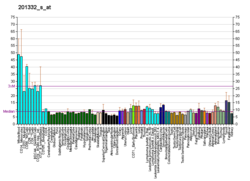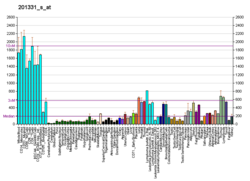Function
STAT6-mediated signaling pathway is required for the development of T-helper type 2 (Th2) cells and Th2 immune response. [8] Expression of Th2 cytokines, including IL-4, IL-13, and IL-5, was reduced in STAT6-deficient mice. [5] STAT 6 protein is crucial in IL4 mediated biological responses. It was found that STAT6 induce the expression of BCL2L1/BCL-X(L), which is responsible for the anti-apoptotic activity of IL4. IL-4 stimulates the phosphorylation of IL-4 receptor, which recruits cytosolic STAT6 by its SH2 domain and STAT6 is phosphorylated on tyrosine 641 (Y641) by JAK1, which results in the dimerization and nuclear translocation of STAT6 to activate target genes. [10] Knockout studies in mice suggested the roles of this gene in differentiation of T helper 2 (Th2), expression of cell surface markers, and class switch of immunoglobulins. [11]
Activation of STAT6 signaling pathway is necessary in macrophage function, and is required for the M2 subtype activation of macrophages. [12] [13] [14] STAT6 protein also regulates other transcription factor as Gata3, which is important regulator of Th2 differentiation. [5] STAT6 is also required for the development of IL-9-secreting T cells. [5]
This page is based on this
Wikipedia article Text is available under the
CC BY-SA 4.0 license; additional terms may apply.
Images, videos and audio are available under their respective licenses.





